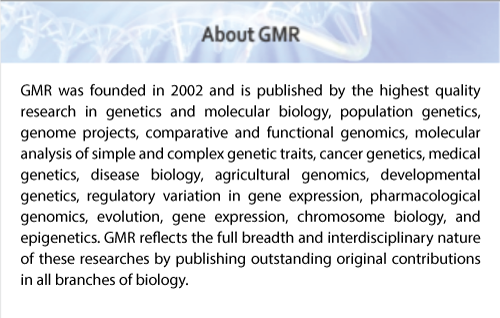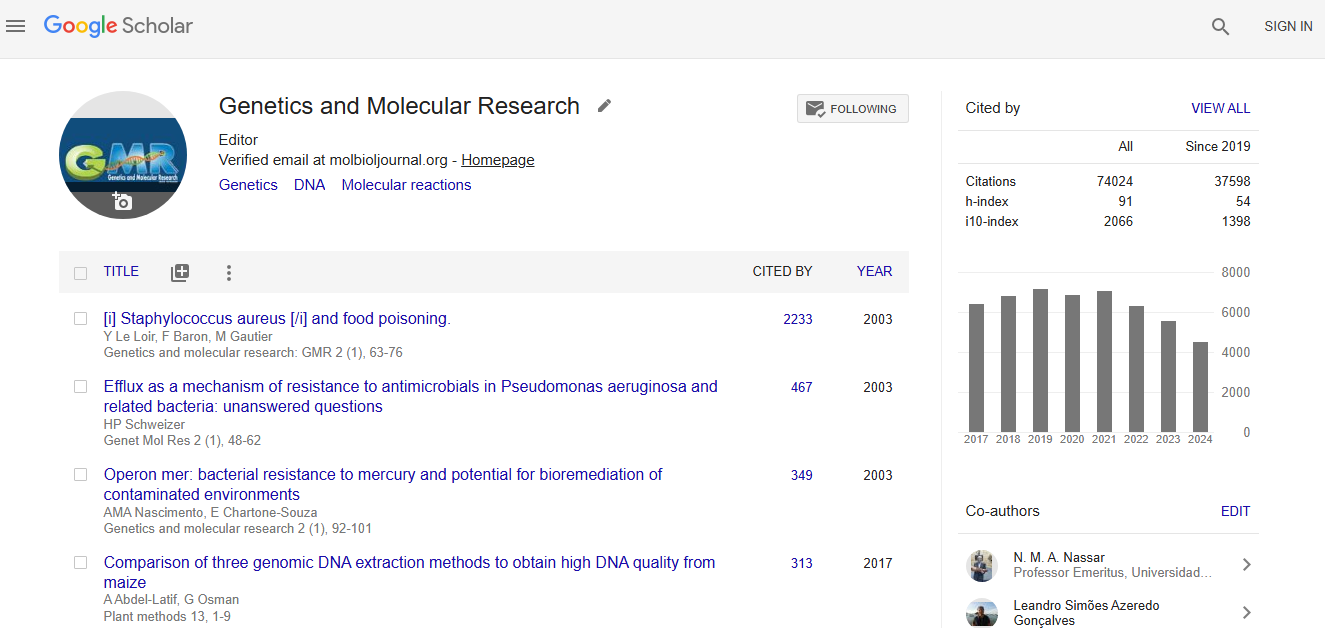Abstract
Investigation of the role of XRCC1 genetic polymorphisms in the development of gliomas in a Chinese population
Author(s): S.C. Fan, J.G. Zhou and J.Z. YinWe conducted a study in a Chinese Han population to investigate the role of XRCC1 gene polymorphisms (Arg399Gln and Arg194Trp) with a risk of susceptibility to gliomas. Samples from 115 patients with gliomas and 228 control subjects were consecutively collected between March 2012 and December 2014. Genotype analysis of XRCC1 Arg399Gln and Arg194Trp was performed using polymerase chain reaction-restriction fragment length polymorphism assay. All the analyses were performed using the SPSS 17.0 software package. We observed that the XRCC1 Arg399Gln and Arg194Trp genotype frequencies conformed to the Hardy-Weinberg equilibrium. We observed that the Trp/Trp genotype of XRCC1 Arg194Trp was associated with an increased risk of glioma when compared to thewild-type genotype (odds ratio (OR) = 2.14, 95% confidence interval (CI) = 1.14-3.86, P = 0.03). In the dominant model, we found that the Arg/Trp + Trp/Trp genotype of XRCC1 Arg194Trp could significantly elevate the susceptibility of developing glioma (OR = 1.79, 95%CI = 1.07-0.94). However, we observed that the XRCC1 Arg399Gln genetic polymorphism did not influence the risk of glioma. In summary, we suggest that the XRCC1 Arg194Trp genetic polymorphism could be a predictive biomarker for the susceptibility to glioma in a Chinese population.
Impact Factor an Index

Google scholar citation report
Citations : 74024
Genetics and Molecular Research received 74024 citations as per google scholar report
